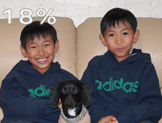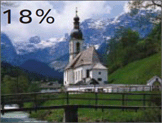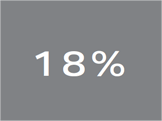Text begins from here.

 |
When an optimal amount of light strikes the film, the resulting image is one that faithfully reproduces the subject. This optimal amount of light is called a "standard exposure," and reproduces the subject using details and tones close to those seen with the naked eye. In principle, a "standard exposure" is the exposure value that reproduces an area of an image with a reflective ratio of 18% as 18% on the film. A camera's built-in exposure meter and auto exposure (AE) operate based on this "standard exposure." |
 |

|

|

|

|

|
|
[ Underexposure ]
Insufficient light makes the entire image dark. Detail has turned to black and tone is lost. |
[ Standard exposure ]
With the optimal amount of light, the subject is reproduced with the same detail and tone as seen with the naked eye. |
[ Overexposure ]
Too much light makes the entire image whitish. Detail and tone have been blown out. |
 |
One basic point of successful photography is that gray with an 18% reflective ratio in the subject's dark and light areas should be correctly captured as the same 18% on film. The exposure value used in this case is called the "standard exposure." |
 |
Why is the reflective ratio 18%?
One reason is that the reflective ratio for human skin is approximately 18%. Since many of the pictures we take are of people, an exposure that can accurately reproduce the color of human skin is used as the "standard exposure." |
 |
Why is the reflective ratio 18%?
Because the average reflective ratio for subjects (e.g., for scenery) we see in our daily lives is regarded as approximately 18%. Therefore, the exposure that faithfully reproduces these ordinary scenes is used as the "standard exposure." |

|
|
 |
This shade of gray has a reflective ratio of 18%.
18% gray reflectors are sold in camera stores as the standard light reflectors. If 18% gray can be faithfully reproduced, both the light and shade sections of the subject can also be reproduced. The reflective ratio for the back of your hand, a blue sky or a green tree is approximately 18%.When you have trouble determining the correct reflective ratio, the ratio of these subjects can be used for reference. |
|



